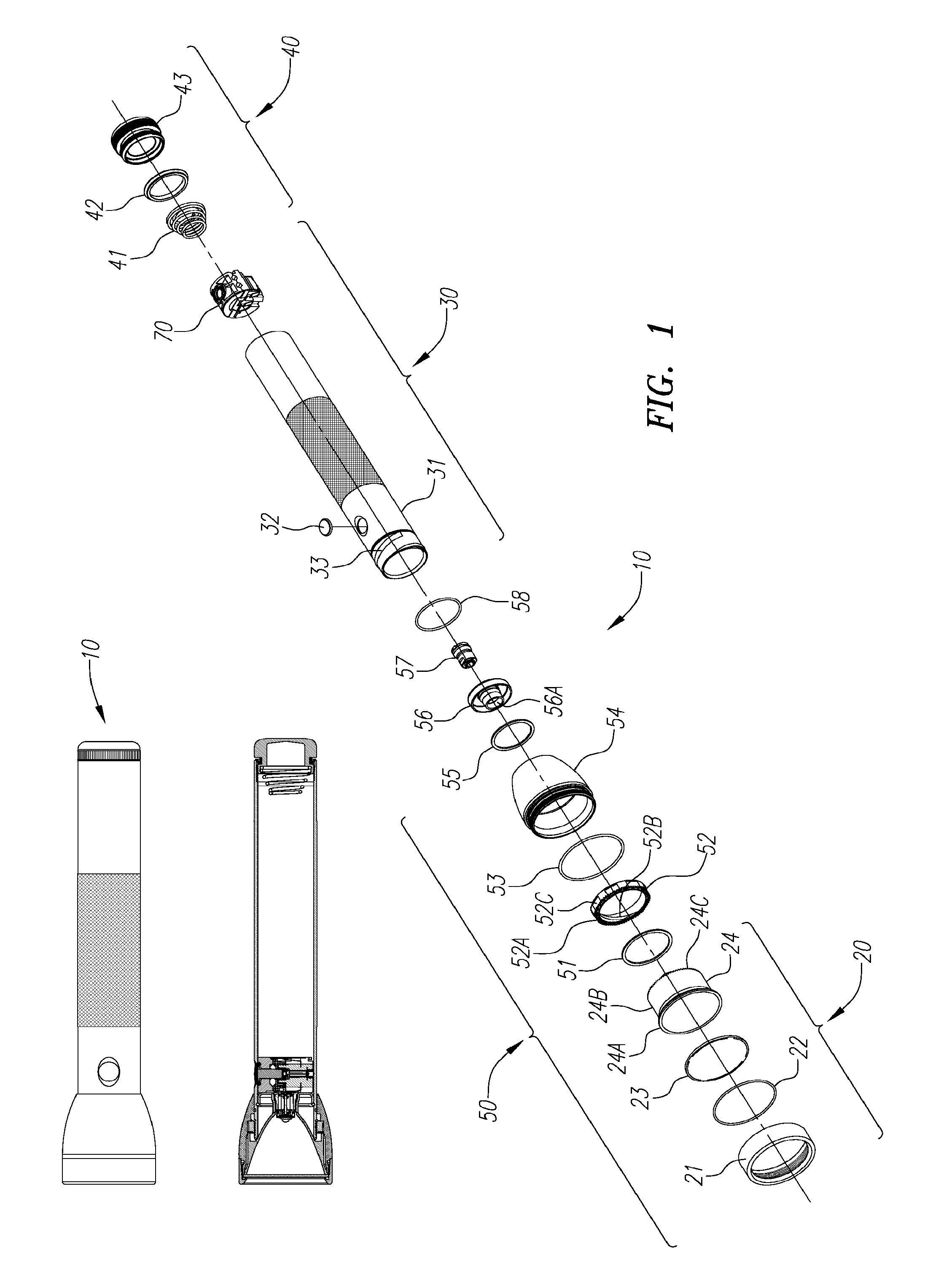Lighting devices
a technology of light source and light source, which is applied in the direction of semiconductor devices for light sources, electric lighting with batteries, light and heating apparatus, etc. it can solve the problems of increasing manufacturing costs, reducing durability, and increasing the cost of assembling, so as to simplify the interaction between components and components, the effect of fewer components
- Summary
- Abstract
- Description
- Claims
- Application Information
AI Technical Summary
Benefits of technology
Problems solved by technology
Method used
Image
Examples
Embodiment Construction
[0052]The current invention is now described with reference to the figures. The same or similar components appearing in more than one figure may bear the same reference numeral. It should be noted that the scope of the current invention is not limited to the examples specifically shown and discussed herein, but also includes alternatives thereto.
[0053]The overall design and operation of lighting devices reflecting the current invention are first described with reference to FIGS. 1 and 2. FIG. 1 shows a flashlight 10 having a non-rechargeable power source, while FIG. 2 shows a flashlight 100 having a rechargeable power source. The overall designs of rechargeable flashlight 100 and non-rechargeable flashlight 10 may be similar and may include a number of the same or similar components.
[0054]As shown in FIG. 1, flashlight 10 may generally comprise face cap assembly 20, barrel assembly 30, tail cap assembly 40, head assembly 50 and switch assembly 70. Similarly, as shown in FIG. 2, rech...
PUM
 Login to View More
Login to View More Abstract
Description
Claims
Application Information
 Login to View More
Login to View More - R&D
- Intellectual Property
- Life Sciences
- Materials
- Tech Scout
- Unparalleled Data Quality
- Higher Quality Content
- 60% Fewer Hallucinations
Browse by: Latest US Patents, China's latest patents, Technical Efficacy Thesaurus, Application Domain, Technology Topic, Popular Technical Reports.
© 2025 PatSnap. All rights reserved.Legal|Privacy policy|Modern Slavery Act Transparency Statement|Sitemap|About US| Contact US: help@patsnap.com



